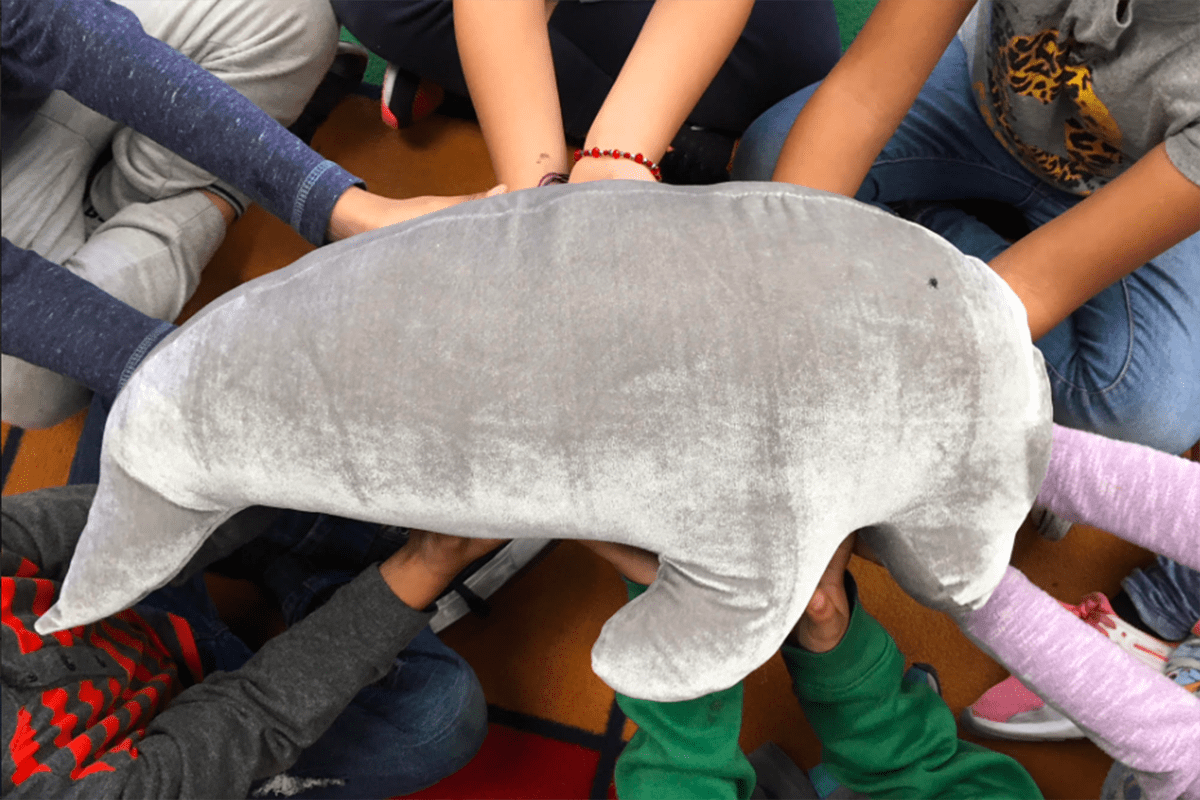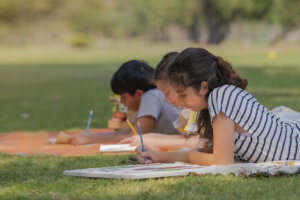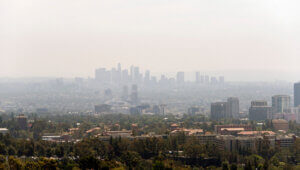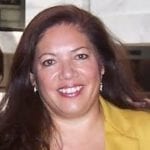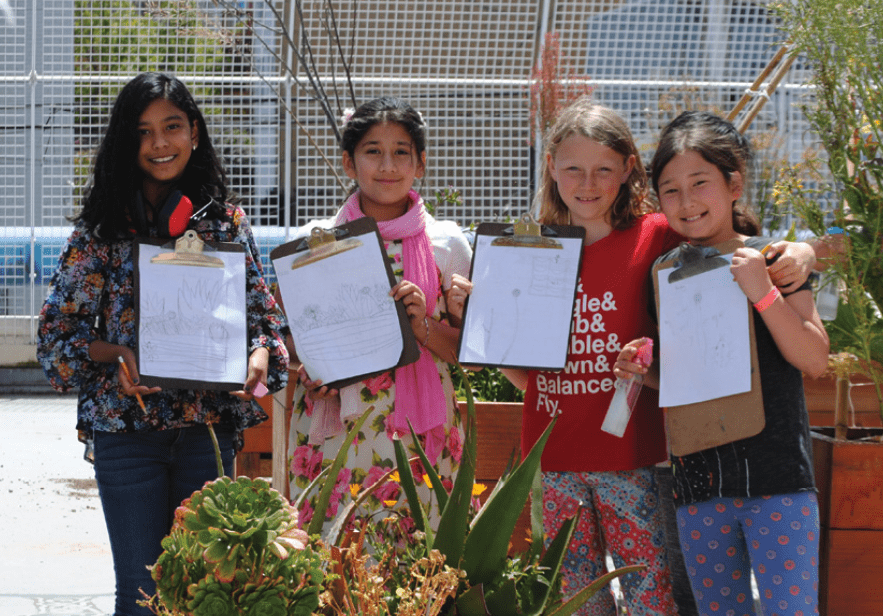Teachers across the state returned to their classrooms last fall prepared to integrate environmental literacy into their K–12 curriculum, to help students develop global competence and agency after participating in the California Global Education Project’s (CGEP) professional learning program, Teaching for Sustainable Communities: Empowering Eco-Literate Global Citizens.
The program begins in the summer with five days of unique professional learning experiences, and continues during the school year with follow-up meetings, coaching, and additional professional learning events. The teachers in our program are developing and implementing instructional plans, which demonstrate the value of facilitating student learning of global issues, and promote student agency to make a difference and sustain their communities. Program efforts culminate in the spring, and include exhibitions of student action projects resulting from this work.
We have gathered stories from teachers in this program who have fueled a passion in their students to learn more, and take action to care for the improvement and sustainability of their communities locally and globally. By sharing a few of these stories, we hope to encourage more educators to embrace environmental literacy as an essential component of every student’s formal and informal education.
Torrance
Victor Elementary teachers Jeff Jennewein, Timothy Magnus, and April Pages participated in the Teaching for Sustainable Communities program at California State University, Long Beach in 2017–18. Led by CGEP Regional Director Barbara Vallejo-Doten, this team of teachers learned about the United Nations’ Sustainable Development Goals and sustainability plans for the City of Long Beach. These teachers decided to work together to engage students in creating sustainability plans for their school.
The Victor Elementary Environmental Engineering Club (VEEEC) was created, and students in 4th and 5th grades banded together to learn about environmental engineering and the issues in need of their attention. The students decided to address the issue of waste generated on campus, primarily during lunch time. VEEEC met with advisors to create and set in motion plans to solve the problem of excessive waste being sent to an overcrowded landfill.
Students observed peer behaviors during lunch time, and studied the data they collected—finding that an average of 16 large bags of trash were being sent to the city landfill daily. They created sorting stations at lunch, and at least four students monitor those stations daily to help their peers sort between trash, recycling, compost, and items that can be shared. Students direct compost material to the school garden, which they also help to maintain, and offer grouchers—green vouchers—to students who bring trash-free lunches. The grouchers are used during school spirit assemblies in drawings for rewards.
VEEEC created roles and titled positions for students, including sorting station technician, compost engineer, public relations promoter, web engineer, webmaster, graphic artist, photojournalist, and new program developer to ensure their waste reduction program continues. After learning about Grades of Green’s Trash Free Lunch Challenge for schools in Los Angeles, VEEEC decided to participate in this year-long program to reduce waste. Students quickly saw their 16 bags of lunch trash reduced to two bags each day.
In the spring of 2018, Victor Elementary was named the elementary school winner for the challenge. Students were acknowledged at the Torrance City Council Meeting on April 24, 2018, where VEEEC student leader Anushka made a presentation to the council explaining why environmental engineering is important both to her school and to all schools.
VEEEC is now working on a campaign to ban styrofoam in the packaging in the cafeteria, and they are looking into a ban on straws. As these environmental stewards prepare to graduate from elementary school, they are also exploring options for continuing these efforts beyond their elementary campus and establishing a program in middle school.
Lawndale
Kimi Waite introduced her kindergarten explorers at William Green Elementary to their new learning partner, National Geographic Explorer Erina Molina, who works as an environmental scientist and conservationist in the Philippines. Waite combined her plans to help students learn about global issues via an inquiry-based learning framework with STEM education, and a focus on environmental literacy. Adding Erina resulted in a truly integrated learning experience for this teacher, her young explorers, and their scientist partner in the Philippines.
Molina challenged her kindergarten partners to help with a problem she was studying in the Philippines: the plight of the endangered dugong, a marine mammal related to the manatee. The students adopted a plush dugong sent by Molina as their class mascot, and named him Duckie. Duckie traveled with students on field trips and around campus as they learned about safe and healthy environments.
Students learned that once thousands of real dugongs grazed on the seabeds off of the coasts of the Philippines, but today fewer exist and require protection from boat propellers and fishing nets. As their knowledge about, and empathy for, the dugong grew, students also learned about problem-solving through research, engineering, and design thinking. They accepted Molina’s challenge and began designing a solution to the problems threatening the dugong.
By the end of the year, the class had used inexpensive recycled materials to create prototypes of a fishing boat and fishing nets that would decrease harm to the dugong population. They created posters designed to educate the public about the issue of bycatch and its impact on marine species like the dugong. Throughout the process, students shared their designs and ideas with Molina using Skype and Google Drive. Molina provided insightful feedback to help students improve their designs and enhance their ideas. Reflecting on the project, Waite reported that students felt empowered to generate and test their ideas to address a global issue by using a diverse set of skills and knowledge gained through this interdisciplinary project.
Santa Rosa
Sarah Heyne wanted her students to learn about the interconnectedness between human and natural systems—as well as the impact that humans have on those systems—so she developed an instructional unit on cancer for her health science and biotechnology students at Piner High School. While teaching this new unit, the Tubbs Fire ravaged Santa Rosa and the surrounding region. When Heyne and her students returned to school, they narrowed their focus to the carcinogens burned in the fires and the effect of exposure to them.
Students created a project focused on BPA, asbestos fibers, and formaldehyde. They explored what they are, where they exist, how they are used, and what happened to them during the fires. They researched cancer, then linked their areas of research to determine a number of civic action projects related to their findings. Some students wrote to their newspaper; others contacted city officials, and when a city council member responded to student inquiries by sharing a wealth of useful information about monitoring water and air quality after the fires, students realized their important role in addressing local environmental issues.
These are just a few of the stories generated from this program. This past spring, students presented their research, ideas, and civic action projects to audiences with the goal of learning more, exercising their agency, and working towards more sustainable communities.
Teaching for Sustainable Communities: Empowering Eco-Literate Global Citizens is a professional learning program created by the California Global Education Project and with the support of the Leonardo DiCaprio Foundation and the California Environmental Literacy Initiative. For more information about this year’s program, visit the CGEP website at CalGlobalEd.org.


